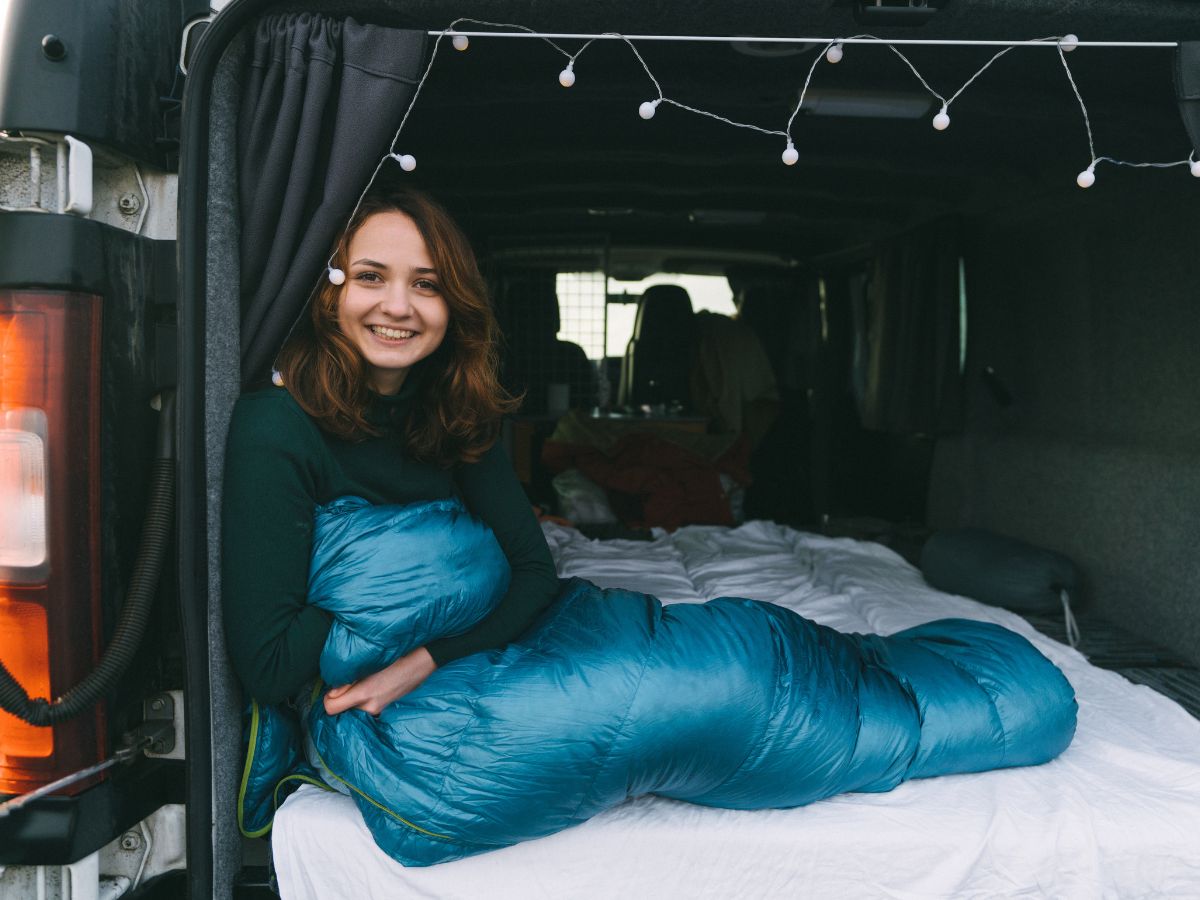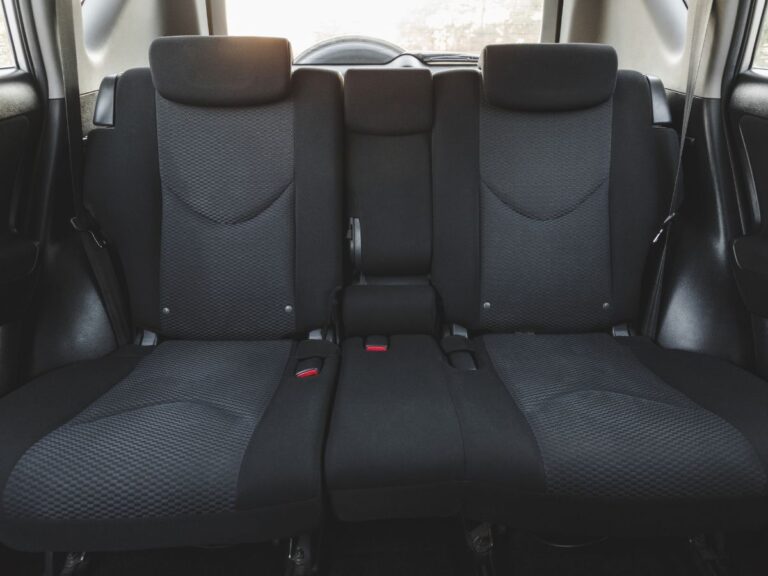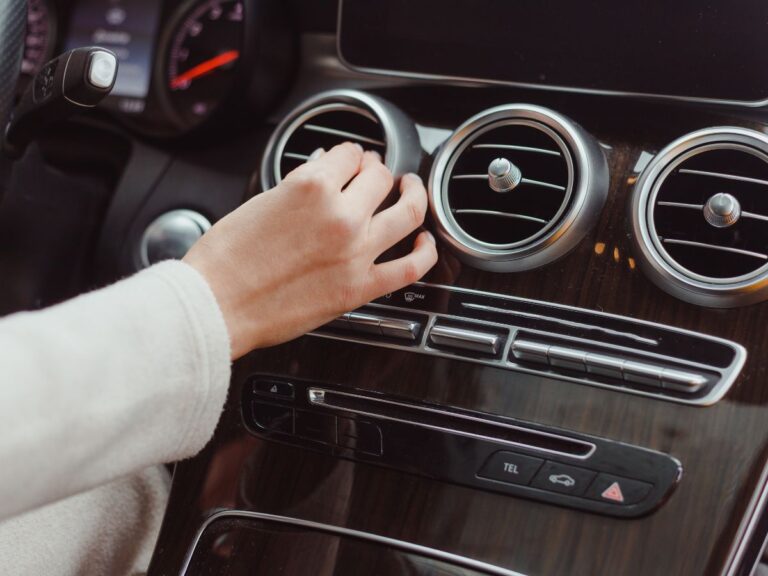Your Survival Guide for Staying Warm Overnight in Your Car
Guarantee a snug fit by checking weather stripping and using reflective insulation on windows. Layer up with moisture-wicking base, wool or fleece, and windproof outer layers. Position reflective blankets and insulate doors with extra layers. Stay warm by choosing fleece or wool bedding that wicks moisture. Safely ventilate by keeping windows slightly cracked for fresh air circulation. Also, have emergency contacts ready and a fully charged phone. This will maximize your chances for a cozy overnight stay in your car.
Insulating Your Car Interior
To stay warm overnight in your car, start by insulating the interior to retain heat efficiently. Begin by checking the weather stripping around your windows and doors. If it’s worn or damaged, replace it to prevent cold drafts from seeping in. Next, consider using reflective insulation on your windows. This type of insulation helps to trap heat inside your car while also blocking out the cold from the outside. Cut the reflective insulation to fit the size of your windows and secure it in place using suction cups or tape.
For the doors, you can place reflective insulation panels on them to further enhance heat retention. Additionally, you can line the floor of your car with blankets or rugs to create an extra layer of insulation. Remember to cover yourself with blankets or sleeping bags to conserve body heat as well. By insulating your car’s interior effectively, you can greatly improve your chances of staying warm and comfortable throughout the night.
Dressing in Layers
Consider layering your clothing wisely to effectively trap heat and stay warm overnight in your car. Start with a moisture-wicking base layer to keep sweat away from your body. Add a thermal layer made of materials like wool or fleece to provide insulation. Finally, top it off with a windproof and waterproof outer layer to shield you from the elements. Remember, it’s easier to remove layers if you get too warm than it is to add them if you’re already cold.
To enhance your warmth further, keep a thermos bottle filled with hot beverages like tea or soup. Sipping on warm liquids can help maintain your body temperature. Additionally, a portable heater designed for car use can provide extra warmth inside your vehicle. Just make sure to follow all safety guidelines when using a heater in an enclosed space. By dressing in layers and utilizing these accessories, you can improve your comfort and safety while spending the night in your car.
Maximizing Heat Sources
To maximize heat sources while staying warm overnight in your car, strategically position reflective emergency blankets on the interior windows to retain and reflect body heat back towards you. This simple action can greatly improve heat retention in the confined space of your vehicle. Additionally, consider the following tips:
- Utilize Thermal Blankets: Wrap yourself in thermal blankets to create a barrier that traps your body heat. You can also place these blankets underneath you to insulate yourself from the cold car seats.
- Block Floor Vents: Covering floor vents with spare clothing or other materials can prevent warm air from escaping downwards. This helps maintain a warmer environment inside the car.
- Focus on Insulating Doors: Use additional layers of blankets or clothing to seal any gaps around the doors. This minimizes heat loss and keeps cold drafts at bay, contributing to a more comfortable night’s sleep.
Blocking Drafts and Cold Air
One effective way to block drafts and cold air while staying warm overnight in your car is by installing weather stripping around the edges of the windows and doors. This DIY weatherproofing method helps create a tight seal, preventing cold drafts from seeping into your car interior. Additionally, using thermal curtains can further enhance insulation and keep warmth inside your vehicle.
To install weather stripping, measure the lengths needed for your windows and doors, cut the stripping accordingly, and adhere it securely along the edges. Make sure to press firmly to guarantee a snug fit. Thermal curtains can be hung behind your seats, creating a barrier between the front and back of the car to trap heat. When parking for the night, make certain all windows are closed tightly and the curtains are in place to maximize warmth.
Choosing the Right Bedding
To guarantee a comfortable and warm night’s sleep in your car, selecting the right bedding is crucial. Here are some essential tips for choosing the appropriate bedding:
- Bedding materials: Opt for bedding made of insulating materials like fleece, wool, or high-quality synthetic fibers. These materials are excellent at trapping heat and will keep you warm throughout the night.
- Bedding size: Make sure your bedding fits your car’s sleeping area snugly to maximize warmth. Use blankets or sleeping bags that are large enough to cover you completely without leaving any gaps where cold air could seep in.
- Moisture control: Choose bedding that wicks away moisture to prevent dampness and condensation. Moisture can make you feel colder, so prioritize bedding that dries quickly and stays dry even in humid conditions.
Consider storing extra bedding in your car in case temperatures drop unexpectedly. Properly storing your bedding can help maintain its effectiveness and ensure you’re always prepared for a comfortable night’s sleep.
Creating a Cozy Sleeping Area
To create a cozy sleeping area in your car, start by insulating the windows with thermal blankets or reflective sunshades to keep the cold out. Layering blankets and clothing can help trap body heat, providing extra warmth throughout the night. Additionally, consider investing in a heated blanket or portable electric blanket for added comfort in chilly conditions.
Insulating Car Windows
Consider using thermal or reflective window covers to effectively insulate your car windows for a warmer and more comfortable sleeping environment. Insulating your car windows is important for heat retention and preventing condensation buildup inside your vehicle. Here are three key tips to help you insulate your car windows effectively:
- Choose the Right Window Covers: Opt for thermal or reflective window covers specifically designed for vehicles. These covers are easy to install and provide excellent insulation by trapping heat inside the car while preventing cold air from seeping in.
- Cover All Windows: Make sure all windows, including the windshield and side windows, are covered to create a complete barrier against the cold. This thorough coverage helps maintain a consistent temperature inside the car and minimizes heat loss.
- Secure the Covers Properly: Ensure the window covers are securely fastened to prevent them from slipping or getting dislodged during the night. A snug fit will enhance insulation and keep the interior of your car cozy throughout the night.
Layering Blankets and Clothing
Layer your blankets and clothing strategically to create a cozy sleeping area that effectively retains body heat and provides maximum comfort during the night. Start by laying down emergency supplies like a reflective emergency blanket as your base layer to prevent heat loss to the cold car surface. On top of this, add thick blankets or sleeping bags for insulation. Utilize thermal underwear or layers of warm clothing to trap body heat close to your skin.
When layering, make sure to tuck the edges of the blankets tightly around you to prevent drafts. Consider using a beanie or a hat to keep your head warm, as a significant amount of body heat can escape through your head. If you have them, wool blankets are excellent for retaining heat.
Using Heated Blankets
When seeking additional warmth and comfort in your car overnight, incorporating heated blankets can greatly elevate your sleeping environment. Heated blankets come in both electric and battery-powered options, each with its own set of advantages. Here’s what to keep in mind when using heated blankets:
- Electric vs. Battery Powered: Electric heated blankets are convenient as long as you have a power source nearby. On the other hand, battery-powered blankets offer portability, making them great for outdoor adventures or situations without access to electricity.
- Temperature Settings: Look for heated blankets with adjustable temperature settings. This feature allows you to customize the warmth level based on your preference and the outside temperature. Make sure to follow the manufacturer’s instructions on safe usage and never leave a heated blanket unattended.
- Safety Precautions: Always check the blanket for any damage before use, and avoid using if there are any exposed wires. Place the heated blanket on top of other blankets for insulation and to prevent direct contact with your skin. Stay warm and cozy while ensuring your safety is a top priority.
Ventilating Safely
To ensure safe ventilation while staying warm overnight in your car, position your windows slightly cracked to allow for fresh air circulation without compromising heat retention. Ventilating effectively is essential to prevent condensation buildup inside the vehicle, which can dampen your sleeping area and make it harder to stay warm. By keeping the windows cracked, you can maintain a balance between airflow and heat preservation.
When ventilating your car, it’s important to take safety precautions to minimize risks. Avoid opening windows too wide, as this can let in too much cold air and defeat the purpose of staying warm. Additionally, be mindful of your surroundings and only crack windows enough to allow for proper ventilation without compromising your safety.
Emergency Communication and Safety
Make sure you have a fully charged cell phone and emergency supplies readily accessible to address any safety concerns while staying warm overnight in your car. In case of an emergency, these steps can help guarantee your well-being:
- Emergency Contacts: Keep a list of emergency contacts saved on your phone or written down in your car. Include numbers for local emergency services, roadside assistance, and family or friends who can help in case of need. Having these contacts easily accessible can make a big difference in getting timely assistance.
- Communication Devices: Alongside your cell phone, consider keeping a portable charger or a car charger to guarantee your phone stays powered. Additionally, a battery-powered radio can help you stay informed about weather conditions or emergency broadcasts.
- Emergency Signals: Learn and have knowledge of common emergency signals such as flashing your car’s headlights, honking the horn in a pattern, or using brightly colored cloths to signal for help. Being able to communicate distress can aid in getting the attention of passersby or emergency responders swiftly.
Staying Warm and Safe Overnight in Your Car
Now that you have all the tools and knowledge to stay warm overnight in your car, you can rest easy knowing you’ll be prepared for any unexpected situation. Remember to insulate your car, dress in layers, maximize heat sources, block drafts, choose the right bedding, create a cozy sleeping area, ventilate safely, and always have a plan for emergency communication and safety. Stay warm and stay safe out there!







